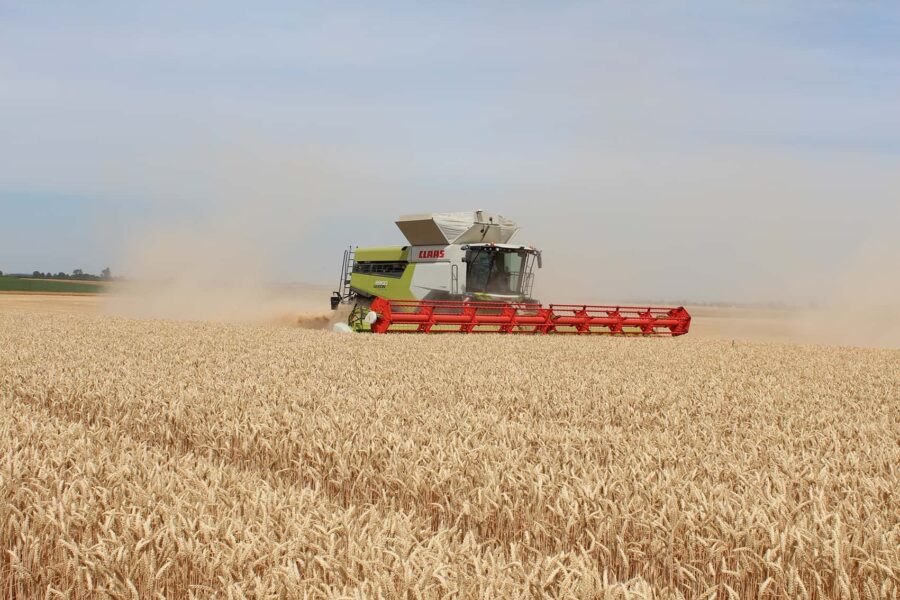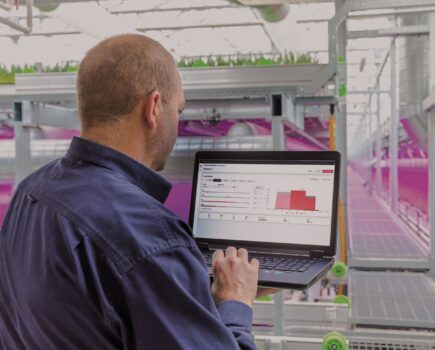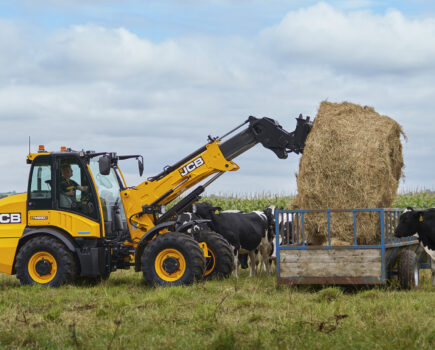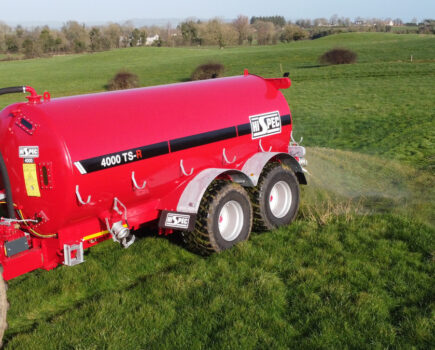Originally introduced in 1995, the CLAAS LEXION revolutionised the way that arable crops are harvested and became the benchmark for cost efficient, high output harvesting of cereals and other crops.
Now, 24 years later, CLAAS has announced the introduction of a complete new 2nd generation of LEXION HYBRID combine harvesters. Ten years in development, 1 million hours of development time and with over 6,000 hours of endurance testing, the new LEXION APS SYNFLOW HYBRID range has been completely redesigned from the ground up to handle all crops and conditions. About 66% of parts are completely different to the current outgoing HYBRID model, which currently accounts for around 75% of all hybrid and rotary combines sold in the UK.
Two versions of the LEXION APS SYNFLOW HYBRID are available. The new LEXION 8000 is a wide body machine that comprises three models, including a new flagship 790hp LEXION 8900 model, making this the world’s most powerful production combine, that can be used with the latest 13.8m (45 ft) wide VARIO cutterbar, plus there are a further five models in the new narrow body LEXION 7000 range.
LEXION SYNFLOW HYBRID range
| Model | Threshing drum (mm) | Feed(mm) drum | ROTO PLUS rotors (mm) | Grain tank | Max. hp | |
| LEXION 8900 | Wide body | 1700 x 755 | 1700×600 | 2x 4200×445 | 15,000/18,000 | 790 |
| LEXION 8800 | 1700 x 755 | 1700×600 | 2x 4200×445 | 13,500/15,000 | 653 | |
| LEXION 8700 | 1700 x 755 | 1700×600 | 2x 4200×445 | 12,500/13,500 | 585 | |
| LEXION 7700 | Narrow body | 1420 x 755 | 1700×600 | 2x 4200×445 | 12,500/13,500 | 549 |
| LEXION 7600 | 1420 x 755 | 1700×600 | 2x 4200×445 | 11,000/12,500 | 570 | |
| LEXION 7500 | 1420 x 755 | 1700×600 | 2x 4200×445 | 10,000/11,000 | 462 | |
| LEXION 7400 | 1420 x 755 | 1700×600 | 2x 4200×445 | 10,000 | 408 | |
As part of the development programme for the new LEXION, currently there are about 220 pre-series machines working across 10 countries worldwide, including in the UK, which have consistently demonstrated increases in output of around 10% when compared on a like-for-like basis with current models.
At the heart of the LEXION HYBRID has been the APS threshing system and it has been the development of the new APS SYNFLOW that is the key to this increase in harvesting capacity. Other new features include more powerful engines, bigger grain tanks, larger concaves, greater separation control, a new drive system and faster unloading. The operator also benefits from a larger cab, with touchscreen CEBIS, full CEMOS AUTOMATIC and a completely new yield monitoring system.
New APS SYNFLOW threshing system
As with current HYBRID models, the new APS SYNFLOW primary threshing system is designed to thresh out 70% of grain, leaving 30% to be removed by the ROTO PLUS secondary separation system.
Central to the APS SYNFLOW primary system is a new 755mm diameter threshing drum, which is some 26% larger than the current 600mm drum found on the LEXION 780, and is fitted with 10 rasp bars, compared to 8. Alongside this is a new 600mm diameter feed drum, which is 57% larger than before and the same size as the threshing drum on current LEXION models.
Due to the threshing drum’s greater diameter and potentially higher centrifugal speed of the rasp bars, this has allowed the drum speed to be reduced, so typically can be run at 550rpm compared to 750rpm, in order to maintain the same rasp bar velocity. Drum speed is infinitely variable using CEBIS from 330rpm to 930rpm, compared to a range of 450rpm to 1050rpm currently, and is fully synchronised with the accelerator and feed drums.
As a result of this increase in drum size and the new concave design, separation area has been considerably increased. LEXION 8000 models have a massive concave area of 1.55m2 and at 1.30m2 the concave area on the narrow body LEXION 7000 is even more than that on the current top-of-the-range LEXION 780 at 1.26m2.
The operator has greater control over the threshing area. The main concave flaps can be engaged hydraulically from the cab and there is a new hydraulic pivoting concave bar between the pre-separation concave and main concave that can be engaged via CEBIS in harder to thresh crops. Again the concaves are infinitely adjustable in CEBIS and fully integrated into AUTO CROP FLOW and CEMOS AUTOMATIC.
Due to the wider drum, concave wrap is shallower and this, combined with the new design where all the APS SYNFLOW units are virtually in a straight line, means that not only is power and fuel use reduced, but the straight flow of material results in less straw damage, improved grain quality and increased throughput.
The new concave design not only makes it easier to change between crops, but are designed so that 40% of the main concave segments can be easily pulled out sideways and changed for different crops, such as beans. For ease of maintenance, the stone trap also now incorporates a self-cleaning mechanism.
The larger feed drum means that that the flow of material into the ROTO PLUS secondary separation system is more positive and the nose separating crop flow into the two rotors has been extended. The angle of the ROTO PLUS rotors themselves has been flattened for higher throughput and reduced straw damage. The rotor concaves have also been redesigned and now use an open finger rotor concave design. The number of rotor cover plates (bomb doors) has also been increased with a fourth added to provide improved grain separation and reduced losses with more control, yet are easier to clean.
To reflect the higher throughput of the LEXION 8000 and 7000, grain tank capacity has been increased up to 18,000 litres on the new LEXION 8900. Tank access has been improved and maximum tank unloading speed is now 180 litres/second with an unloading time of just 100 seconds. The pivot angle of the unloading auger has been changed to 105 degrees, making it easier to see from the cab.
Enhanced operator comfort
The LEXION 8000/7000 feature a new, larger cab providing plenty of operator space and comfort. Incorporated into the cab is improved sound proofing and a new grain tank window, while the seat can be moved further back for greater legroom.
All the main functions are controlled using the CMOTION control, which incorporates a new favourites management system, and the latest CEBIS touchscreen terminal, which can be adjusted independent of the armrest or even swung out of the way for improved visibility. Where CEMOS AUTOMATIC is specified this information is now fully integrated into the CEBIS terminal.
The operator has the flexibility of having three different ways of adjusting the main machine settings. This can be done using either the CEBIS touchscreen terminal, the rotary push switch on the CEBIS control panel, or via direct switches on the new LEXION armrest which open a dialogue box in CEBIS to show the level of adjustment. The armrest is fully adjustable for reach and height and also includes radio and telephone controls and a USB charger socket.
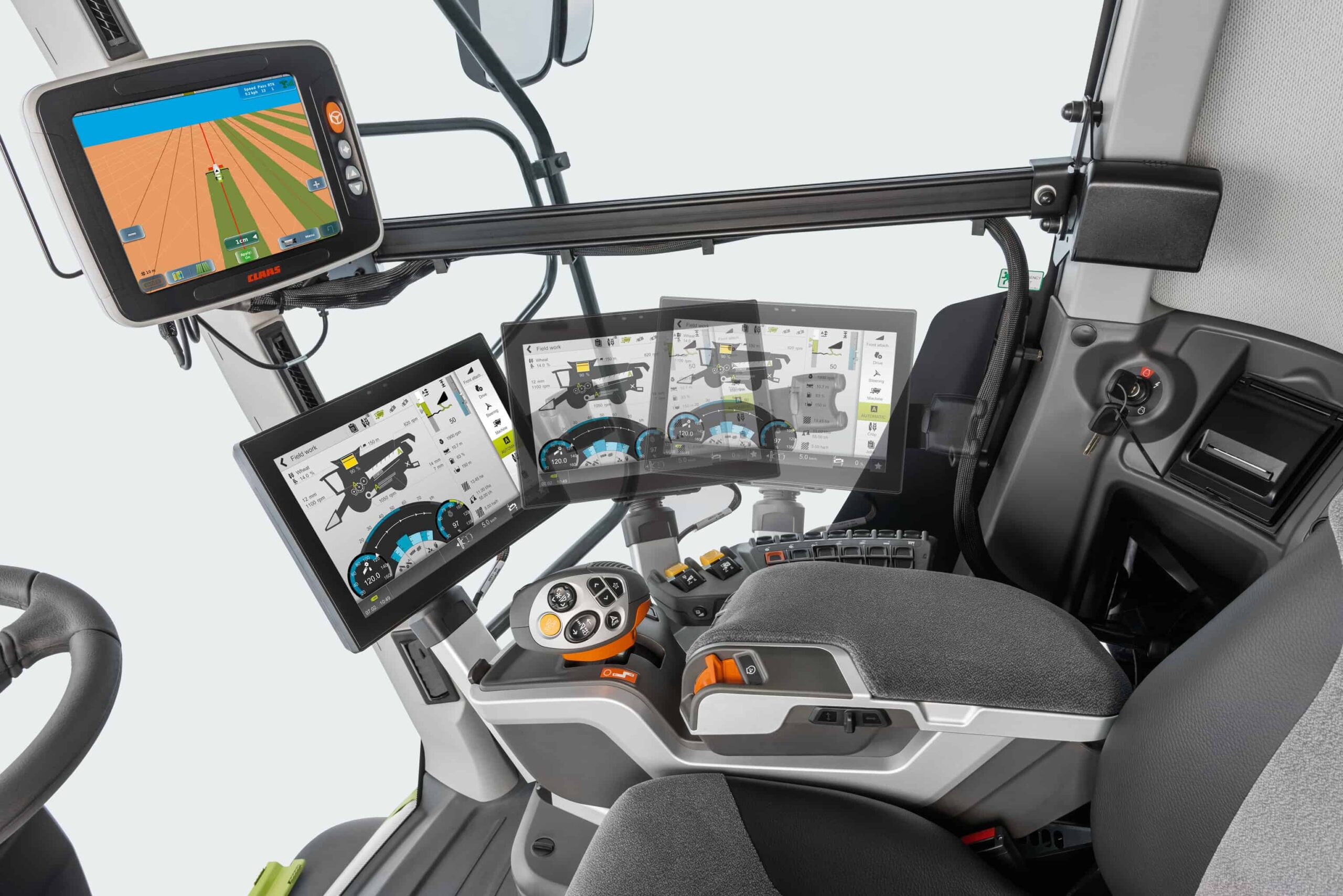
Greater engine power
The LEXION 8000/7000 is powered by either MAN or Mercedes-Benz engines with power outputs ranging from 408hp on the smallest LEXION 7400 to a new high of 790hp for the flagship LEXION 8900.
For optimum fuel efficiency and economy all models are fitted with the DYNAMIC POWER intelligent engine management system which automatically adjusts engine power output relative to load. DYNAMIC COOLING variable fan cooling is also standard on all models, which draws clean air in from above the combine and blows it out down over the sides of the machine.
A completely new drive system, based on that used in the JAGUAR forage harvester, ensures a more positive, smooth engagement of the threshing and auger systems. A new clutch system is used to engage and tension the belts, resulting in improved belt life. The straight line design of the drive system results in lower power loss and has reduced the number of belts. This not only eases maintenance, but has also resulted in fewer ledges and angles on which dust can gather, so improving overall cleanliness.
Irrespective of whether they are fitted with the TERRA TRAC track system or wheels, all new LEXION 8000/7000 models are capable of travelling at 40kph to keep transfer time to a minimum. All wheeled machines are now available with a differential lock and larger tyre sizes can also be specified for both the front and back axle, going up to 42 inches and a diameter of 2.15m on the front axle and 34 inches with a diameter up to 1.75m on the rear.
New QUANTIMETER yield measuring and steering systems
Unlike the volumetric yield measuring system used in the current LEXION, the new QUANTIMETER yield measuring system fitted to the LEXION HYBRID 8000/7000 takes its information from a pressure cell. Not only is this far more accurate and robust, but it only needs to be calibrated once a year for each crop type. It is also fully compatible with TELEMATICS for accurate record keeping and yield mapping.
Originally launched in 1999, the LASERPILOT automatic steering system proved revolutionary and over 70% of LEXION combines sold in the UK feature some form of steering system.
For the new LEXION HYBRID 8000/7000, CLAAS has developed the new FIELD SCANNER automatic steering system. This uses a radar scanner originally developed by Audi, which is mounted on the top of the cab. Unlike LASERPILOT which can only scan in one direction, FIELD SCANNER can scan over an arc of 145 degrees to both the left and the right, and is capable of recognising both standing crops higher than 10cm and tramlines. FIELD SCANNER requires no calibration, is easy to set-up and because it can follow tramlines is suitable for use within a reduced traffic system.

